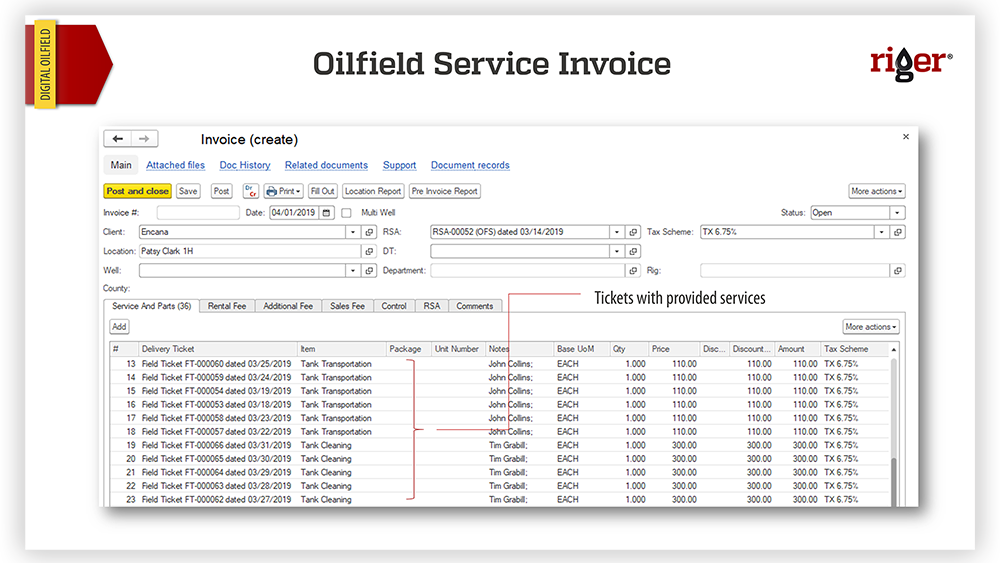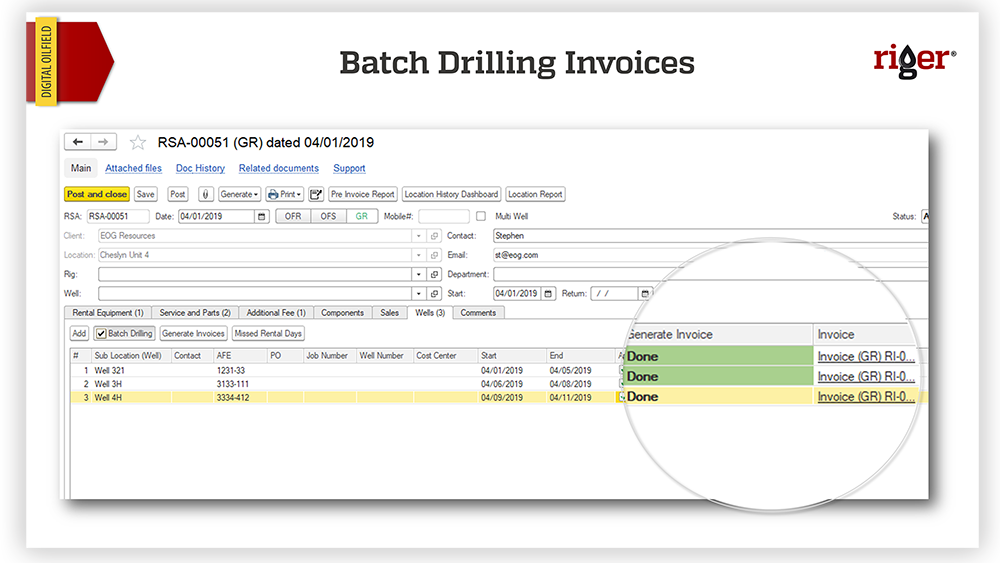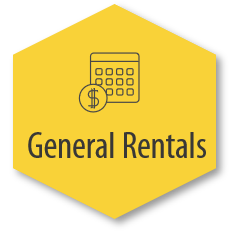We’ve all been the guy chasing people down for payments only to realize the invoice was never sent, or included an error.
One of the biggest mistakes we see in the industry is inefficient invoicing systems. Business growth relies on liquid capital, and that means cash flow. Every day spent waiting for an invoice to be paid is a day where that money could have been reinvested into your business.
In the environment where multiple employees are involved, dealing with various services, parts, equipment, performing different tasks based on numerous tickets – it is very challenging to create an accurate invoice for many oilfield service companies.
The ability to generate accurate invoices in a timely manner with no revenue loss has been one of the major benefits that RigER clients get. In the past several years the invoicing mechanism in RigER has evolved to a level that the system now successfully supports every possible Oilfield invoicing scenario that our customers require, enabling invoicing within 24 hours or as soon as the job is completed.
Just to clarify: the Invoicing Module in RigER can and will take into account everything that generates revenue or somehow affects it – be it service, daily equipment rentals (from simple items to complex assets), general rentals (with different rental periods), billing cycles, etc. The Rental Service Agreement (RSA) represents a client’s job and will act as a source for invoicing algorithm to gather pricing information, while tickets will define rental periods, service provision dates, quantities of services provided or equipment and so on.
Below, we will briefly discuss some of the invoices that RigER has to offer.





